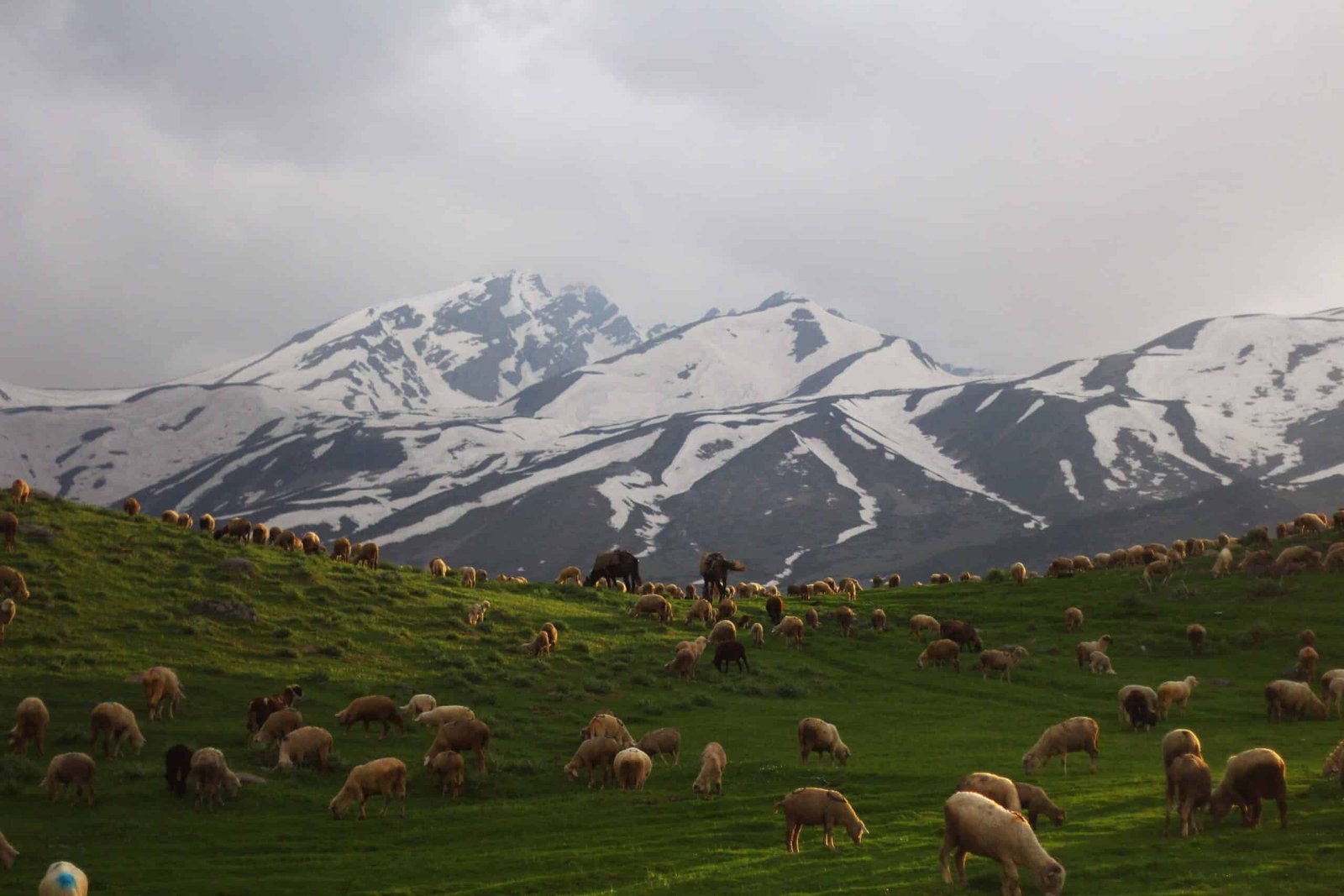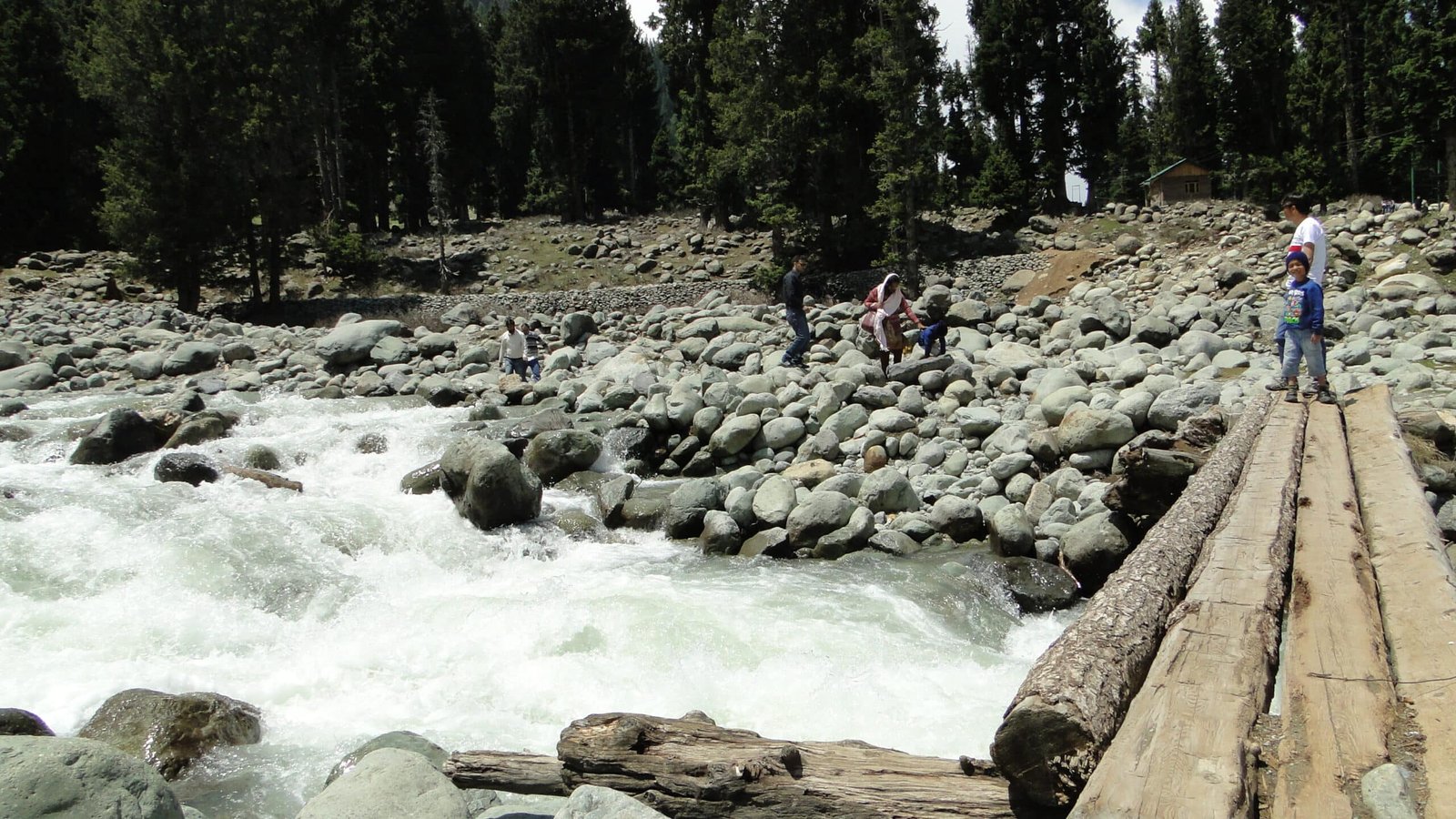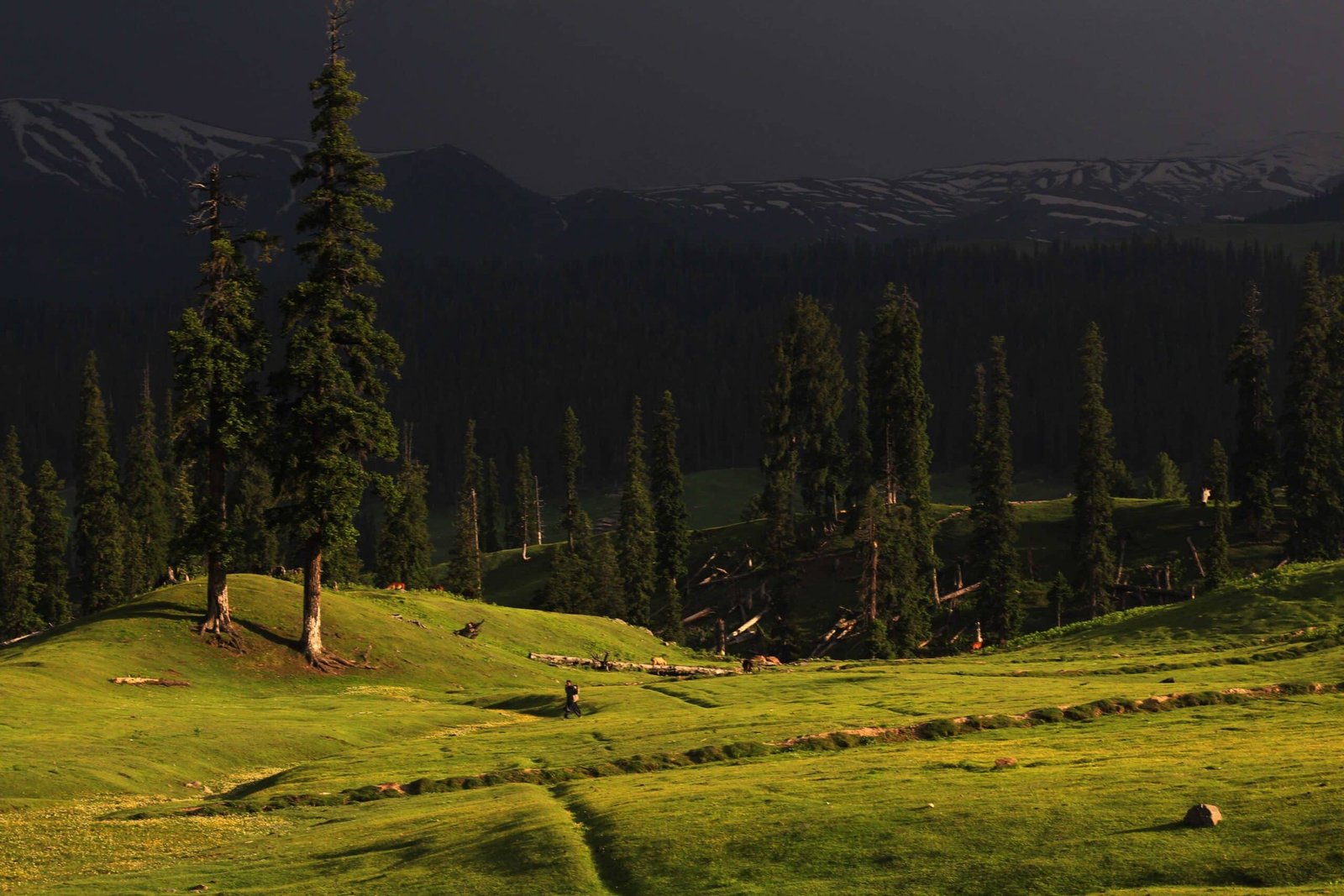Trek Difficulty
Difficult-Moderate
Trek Duration
6 Days
Highest Altitude
11,768 ft
Suitable For
12-62 years
Bodpathri Lakes Trek
Bodpathri Lakes Trek is one amoong the fantastic meadow and alpine lake Kashmir treks. This trek is quite unique in its landscape and vast meadows which are unparallel. Even the meadows of the Kashmir Great Lakes trek fall short before the pristine and huge meadows of this trek. The trek falls in the Pir Panjal Range of Kashmir. It is the first Pir Panjal Range trek that we have been doing for a decade now. The entire trail was under army surveillance and was quite a restricted area.
However, the trail and the entire Pir Panjal Range is now thrown open to trekkers. The trek starts from the famous offbeat destination of Kashmir called Doodhpathri. Bodpathri Lakes Trek is an easy to moderate trek which promises to mesmerize you with its utter breathtaking serenity and beauty. The trek is finished in 6 days and goes via lush carpets of grass, has an abundance of alpine lakes and the shade of forest cover.
The trek gives you a wide view of the Pir Panjal range and you get to see the lofty peaks of this range from Sunset peak to Trattakoti peak. A trekker gets to see six alpine lakes on the trail of this trek and the two lakes of them are Bodsar and Pamsar lakes. Another lake called Damamsar lake is at par in beauty with other alpine lakes of Kashmir.
Bodpathri trek is a Himalayan traverse across the lush carpet of grass and along the fresh alpine lakes under the towering peaks of the Pir Panjal range. Imagine yourself in the middle of the meadow and they stretch as far as the eye goes and they seem to merge with the mountain range.
Another feature of this trek is the serenity. This trek is still offbeat, and you will rarely see people around you. This makes this trek special in the time of crowded trails of Uttrakhand and other treks of Kashmir.
Get upto 30 % off on: Warwan Valley Trek & Tarsar Marsar Trek
Trek Fee
₹17,000.00 Original price was: ₹17,000.00.₹14,500.00Current price is: ₹14,500.00.
Book The Tour
What are the Highlights of the Trek?
- Twin alpine lakes: Bodpathri lakes trek, also known as Tarsar Marsar Trek, is popular due to the presence of two stunning lakes- Tarsar Lake and Marsar Lake. These lakes and their beauty is a treat to the eyes.
- Photography: It is a popular destination among photography enthusiasts and it should be! The landscapes with vibrant wildflowers are just postcard-perfect.
- Local Interactions: The route of Bodpathri Lakes trek forms the home of communities like Gujjar and Bakarwals. They are very friendly and you might get a sight of their lives in the nearby remote villages.
- Adventure & Exploration: The trek is moderate and sometimes gets challenging too adding the dash of adventure to it and you explore various types of terrains like trekking in landscapes, among forests, streams etc.
Fixed Departure
| Date | Status |
|---|---|
| 5 July 2025 | Open |
| 6 July 2025 | Open |
| 12 July 2025 | Open |
| 13 July 2025 | Open |
| 19 Jul 2025 | Open |
| 20 July 2025 | Open |
| 26 July 2025 | open |
| 27 July 2025 | Open |
| 2 Aug 2025 | Open |
| 3 Aug 2025 | Open |
| 9 Aug 2025 | Open |
| 10 Aug 2025 | open |
| 16 Aug 2025 | Open |
| 17 Aug 2025 | Open |
| 23 Aug 2025 | Open |
| 24 Aug 2025 | Open |
| 30 Aug 2025 | open |
| 31 Aug 2025 | Open |
| 6 Sep 2025 | Open |
| 7 Sep 2025 | Open |
| 13 Sep 2025 | Open |
| 14 Sep 2025 | Open |
| 20 Sep 2025 | Open |
| 21 Sep 2025 | open |
| 27 Sep 2025 | Open |
| 28 Sep 2025 | Open |
Bodpathri Lakes Trek – A Detailed Itinerary
- Drive Distance: 5.5 Km.
- Drive Time: 2.5 hrs.
- Trek Distance: 5 Km.
- Trek Duration: 4 hours
- Altitude Gain: 2700m to 3400m
This is the first trekking day. The gradient of the day is easy. You will start from the Doodhpathri meadow and after crossing the dhoodhganga river you start ascending the forest cover. The ascend will take around 2 to 3 hours of mild-paced walking. The trail is definite and winds up until you reach above the tree line in the clearing called Diskal meadow. This is from where the meadows start and will be your company until the end of the trek.
Here at Diskal meadow, you will be welcomed by a small settlement of Shepherd. The walk will then take you via some short ascends and descends until you find the mountain ridge. Start ascending this mountain ridge and once you reach the highest point of this ridge, you will see the vast Ashtaar valley in front of you spread in beauty and charm.
You will have to descend from the ridge towards your campsite. The descent is via boulder section and river crossing. You will be camping beside the river stream and in the vicinity of the shepherd huts.
Many trekkers love the Brahmatal Trek for its perfect mix of adventure and scenic beauty in Uttarakhand.
- Trek Distance: 6 Km.
- Trek Duration: 4 hours
- Altitude Gain: 3400m to 3500m
The gradient of the day is again easy. You will be ascending around 300m today. The day will be of gradual ascents and will have some river crossings. The trek will start with a short ascend and then a descent. The descent will have boulder patches and then there is a short ascend and then a vast meadow opening on which you will walk. This flat meadow will last for around 2 km until you will have to ascend again. Shortly afterward you will have to cross the river stream and after which is your Gurwansar campsite.
- Trek Distance: 7 Km.
- Trek Duration: 6 hours
- Altitude Gain: 3500m – 3810m
The gradient of the day is moderate to difficult. This is the day you will see the Pamsar Lake – the vast lake tucked away in the middle of nature. This trekking day is long. It will take around 7 hours of moderate-paced trekking to reach the next campsite.
The day starts with an ascend on a ridge which is followed by a descent into the clearing. This day is the succession of valleys and ridges. After almost every ridge you will be seen a beautiful valley. After the descent, you will trek on a ledge for a few kilometers. Shortly afterward you will reach Pamsar Lake after ascending for around a kilometer. As the length of this lake is huge, you will have to explore it by walking along its banks to see it fully.
From the lake, there is again ascent and descent and some boulder section until you reach your campsite at Duriem.
- Trek Distance: 11 Km
- Trek Duration: 8 hours
- Altitude Gain: 3850m to 3820 via 3962m
Today is the toughest day of the trek. It is a long day of trekking where you will have to ascend many ridges to explore the different lakes of the trek.
Post breakfast, start early with the proper trekking gear. Fill your water bottles and start ascending for around 3km. From here you will go to explore Bodsar Lake. You will have to come back to the point where you started going towards Bodsar Lake. From the viewpoint where you see Bodsar Lake, you will also see another lake called Lokutsar Lake.
After this, you will come down to the same spot where you took a trail to Bodsar Lake. From here start ascending in the boulder patch and a steep ascend. Shortly you will get to see the lake.
After a few ascends and descends you will walk on the ridge. And from there you will see the gorgeous Damamsar Lake, Navkansar I, and Navkansar II. These are all glacier-fed lakes. The campsite is then a complete descent from this point. The campiste is at Gadtar.
- Trek Distance: 11km
- Trek Duration: 8 hours
- Altitude Loss: 3850m to 3820 via 3962m
This is the last day of the trek. The grade of the day is moderate. It has descents and river crossing. You will be losing altitude on this day. There is no ascent.
The day starts with the river crossing and then a continuous descent along the wavy landscape. Towards the end of your descent, you will be in the famous Tosamidan valley. This is unmatched in its beauty. Shortly afterward you will reach the road and the cab waiting there will take you to Srinagar.
- Trek Distance: 11km
- Trek Duration: 5 hours
- Altitude Loss: 3820m to 3070m
This is the last day of the trek. The grade of the day is moderate. It has descents and river crossing. You will be losing altitude on this day. There is no ascent.
The day starts with the river crossing and then a continuous descent along the wavy landscape. Towards the end of your descent, you will be in the famous Tosamidan valley. This is unmatched in its beauty. Shortly afterward you will reach the road and the cab waiting there will take you to Srinagar.
Known as the “Queen of Winter Treks,” the Kedarkantha Trek attracts thousands of adventure enthusiasts.
Know Before You Go
How Difficult is Bodpathri Lakes Trek?
Bodpathri lakes trek is an easy to moderate trek. This is recommended for fit beginners. This trek is a mix of meadow walks, boulder patches, river crossings, ascents, and descents. This trek has some difficult days like the days when you will be exploring the alpine lakes and has to ascend the ridges. However, this trek does not require any mountaineering technical knowledge and practice.
If you are fit and if you haven’t ever trekked, you will be able to finish this trek. One has to be cautious while crossing the boulder sections and river crossings. And the ascents and the descent on the last day are heavy on your legs.
Best Time to do Bodpathri Lakes Trek
July to September is the best time to do Bodpathri lakes trek. When the rest of the country is under the spell of monsoon, that is the best time to go for this trek. In summer, the best months are from July to September. In winter this trek is closed because of the heavy snowfall.
During autumn i.e from October onwards, the trek gets closed. This is because of the snowfall on the higher reaches of this trek. This trek is also not accessible in spring i.e from March to May as the snow is still in the upper reaches.
How to Reach Bodpathri Lakes Trek
To reach the base camp of this trek, we have to start from Srinagar. The base camp of this trek is at Doodhpathri. It takes around 2 hours of drive from Srinagar to reach there. Here are the ways you can reach the base of this trek.
By Air: The nearest airport for this trek is the Srinagar airport, from there take a direct cab to Doodhpathri. There are no shared cabs from the Airport.
By Rail: The nearest railway station connected to the rest of the country is Jammu Railway Station. From there take a shred cab or bus to Srinagar and from there take a cab to Doodhpathri.
By Road: To reach the base camp, you will have to reach Kashmir first by Road, and from there all the roads towards the base camp are well maintained. You can take the road from Srinagar going towards Budgam district.
Things to Carry on Your Trek
- Backpack: You must carry at least one backpack of 60 liters.
- Shoes: You need to have trekking shoes necessarily. The shoes must be sturdy and high ankle.
- Three T-shirts: Carry one full-sleeve dry-fit. T-shirt, and at least two other T-shirts.
- Three insulation layers: Carry at least 3 insulation. layers – 2 light fleece and one full-sleeve sweater.
- One Outer layer: You need at least one padded jacket/down jacket.
- Two trek pants: You need to carry two pairs of pants and that will be sufficient for your entire trek.
- Trekking poles. Two trekking poles are always better than a single trekking pole.
- Raingear: A poncho is a good choice over jacket-type raingear, as the poncho covers your entire body till the knees down and you can keep your daypack bag inside it too.
- Rain cover for your backpack: Buy a good rain cover for your backpack to keep it dry and safe. It also helps to keep your backpack from wear and tear.
- Daypack: A small bag of around 20 to 30 ltrs to carry your essentials like water bottle, rainwear, headlamp, snacks, etc
- Sunglasses: Carry one to protect your eyes from glare and UV radiation.
- Suncap: You can either get the normal suncap or a suncap with flaps which is preferred by most trekkers and is advisable by the experts.
FAQs
Bodpathir likes its high-altitude trek. The maximum altitude of the trek is 3980m. However, we don’t camp at this altitude. It is just a mountain pass that one has to cross to go over to the other valley. In terms of altitude gain, this trek has many ascends and descends that one has to traverse.
This is quite a frequently asked question about this trek. The Bodpathri lakes trek is moderate. It is best recommended for trekkers or fit beginners. What makes it a moderate-level difficult trek is the multiple ascends and descends.
This trek is moderately lengthy. The total distance of the trek is 49km. This one covers 5 days of the duration. The distance is almost evenly distributed. The first day of the trek is for acclimatization.
Bodpathri Lakes is a summer trek. The best time to do this trek is from July to September. Other than these months, the climate and temperature don’t suit trekking in this region. In winter, the trek is closed.
The total duration of the Bodpathri trek is 6 days. In this one day is kept for acclimatization. So total 5 days of trekking. The 6 days of the trek include going and coming from the base camp to Srinagar.
Doodhpathri is the starting point for the Bodpathri Lakes trek. Doodhpathri is a very famous tourist place in Kashmir. It is an extremely beautiful place that has long wavy meadows with the pine forest surrounding these meadows. The place is best known across the world for its lush meadows.
Yes, a beginner can do the Bodpathri trek. It is perfect for fit beginners. It doesn’t have any technical climb or any safety concerns. It just needs your moderate fitness level, and you are good to go for this trek.
This trek is completely safe for all trekkers. There are no cliffs or technical climbs. The trail is definite and the evacuation is safely done. It has multiple exit points like Tosmaidan, doodhpathri, etc. One can go for the Bodpathri trek solo as well.
It is completely worth doing the Bodpathri trek. It has one of the best meadows in Kashmir, some of the best alpine lakes, and amazing mountain ranges on the way. The meadows are unending and like a carpet, the lakes are glacier-fed and completely crystal clean.





 Call Now
Call Now Chat With Us
Chat With Us